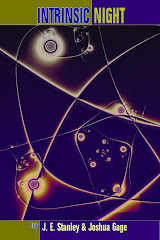Acknowledgments listed at the bottom of the post.
*****
Selected Regions of the Moon
Mare Ingenii
The Sea of Ingenuity
Hidden from Earth,
landing site of our exploratory probe.
Mare Smythii
Smyth’s Sea
The first observation and surveillance station.
Mare Australe
The Southern Sea
On the edge of visibility,
launch site for the initial wave of attacks.
Palus Epidemiarum
The Marsh of Disease
Where the last human was brought
for the Ceremony of Extermination.
Mare Frigorus
The Sea of Cold
Where its frozen remains are displayed.
Sinus Iridum
The Bay of Rainbows
Where we held the Rites of Victory
and planted the sacred flags:
The Flag of The Maker’s Promise,
The Flag of Inherent Destiny,
The Flag of Eternal Conquest.
Oceanus Procellarum
The Ocean of Storms
Staging area of the 7th Engineering Division,
beneath our newest planet, gleaming
blue and white in the dark sky,
now sterilized
and ready for Insemination.
*****
Six Random Facts About Halley's Comet
Inspired by Suzanne Halley Dean's "Halley's Comet"
1.
The Sun, like all stars, is male.
The comet, like all comets,
is female, a lover
orbiting her beloved,
burning in his presence,
then dying, again and again,
in the cold void of his absence.
Someday, she will burn away completely.
The Sun will take no notice.
2.
Once, Halley's Comet
passed too close to Pluto.
A minute piece broke off,
fell 3 billion miles to Earth.
On the spot where it landed,
a tree sprung from the soil,
a tree like no other, with leaves
that resembled blue flames
whenever the west winds would blow.
The tree was so beautiful
that it was cut down
and sold in pieces.
Centuries later, a small piece
ended up in the hands of Andrea Amati
who used it in his finest violin.
The instrument would play only melodies
of loneliness and exile
though no one knew why.
3.
Perihelion: 0.6 Astronomical Units,
closer to the Sun than the Earth will ever be.
Aphelion: 35.1 Astronomical Units,
farther than any human will ever travel,
though some may tell you otherwise.
For both Halley's Comet and humans,
distance
is always the most relevant variable.
That one thing, we have in common.
4.
Halley's comet becomes visible
approximately once every 28 blue moons.
"Approximately" because precision
is an abstract concept.
Nothing in nature is precise.
There is no truly straight line,
no perfect circle.
Besides, the blue moon isn't even blue
and has its own agenda.
5.
"Halley's Comet" is not its true name.
Its true name can only be written
in the language of the sky
and cannot be expressed in English
or, for that matter, any human tongue.
6.
The Sun, like all stars, is female.
The comet, like all comets,
is male, a lover
orbiting his beloved,
burning in her presence,
then dying, again and again,
in the cold void of her absence.
Someday, he will burn away completely
and the Sun will take no notice.
*****
Fiat Null
In the end, there was no thermonuclear firestorm,
no runaway buildup of greenhouse gases
or asteroid punching into the Earth’s crust,
not even a single apocalyptic horseman
blazing through the sky,
just the Word, inverted,
the right syllables,
spoken
in the proscribed order,
at exactly the right time,
followed by the morning
we would have awoken
to pure and total darkness,
had we woken at all.
*****
a world with no dragons,
men kill
each other
*****
Acknowledgments:
“Selected Regions of the Moon” and “Fiat Null,” Buzzkill: Apocalypse – An End of the World Anthology (NightBallet Press, Cleveland, Ohio. 2012)
“Six Random Facts About Halley’s Comet," Star*Line: The Journal of the Science Fiction Poetry Association (35.1, January-March 2012)
“a world with no dragons,” 2012 Hessler Street Fair Poetry Anthology (Cleveland Heights, Ohio. 2012)
J.E. Stanley
jestanley AT cox DOT net
Sunday, January 6, 2013
Subscribe to:
Post Comments (Atom)






7 comments:
Wow, really like that last one. Great imagery, and awesome ending.
Thanks Greg!
Thanks for the new book! Congrats! Looks awesome, can't wait to read it. I'll post a review and let you know when it's up.
http://greg-schwartz.blogspot.com/2013/06/chapbook-review-selected-regions-of.html
I noticed that there's an extra stanza to Fiat Null than is in the chapbook. When did you add it (or remove it - I don't know which version came first!)?
Also, are you going to publish a list of poems eligible for the Rhysling this year?
Hey J.E. -
I changed my blog's domain name recently, so the link to the review above is no longer valid. Here's the new link:
https://haiku-and-horror.blogspot.com/2013/06/chapbook-review-selected-regions-of.html
This blog post offers an intriguing perspective on celestial bodies.
Post a Comment